I have been a long time fan of Dr Steven Lin’s (author of The Dental Diet) approach to functional dentistry, not just treating the problems he see’s in teeth, but getting to the root (pun intended) cause of dental issues through a holistic approach; stemming from diet and environmental factors.
He works together with his wife Cassandra Lin at Helix Dentistry a holistic dental practice on the central coast, NSW. Cassandra is an incredible Orofacial Myologist, who as a mother herself has a strong focus on babies and children’s oral health.
I love following Cass on her informative instagram account and asked if she would like to provide some information on some FAQ I am asked regarding when to start brushing your babies teeth, what toothpaste to use, what cup she thinks is best from a Orofacial Myologist viewpoint and her opinion on baby led weaning!
When should we start brushing our baby’s teeth?
This is a common question we get asked by so many parents at Lumi and it can often feel like a enormous task to introduce yet another annoying step with your child’s already existing routine. However, you can start wiping the gums before the teeth even erupt! This means starting the routine from day dot, setting you and your child up for optimal dental health, by simply wiping the gums with a small gauze or washcloth after feeding.
It’s time to move to a toothbrush when your baby’s teeth first appear, often this can be a strange sensation for your bub and in some cases will need to be slowly introduced. Allowing your baby to explore a toothbrush head in their mouth will be a great starting point for any brushing habit. It is often the case that baby teeth are considered “less” important, but the truth is baby teeth DO matter and they are a critical component of your child’s development. These baby teeth are the building blocks for the erupting adult dentition and compromised baby teeth can be a sign of ongoing problems with adult dentition, they also play an important role in the physical, emotional and social development of your child.
Daily oral health routine should be done twice a day for two minutes with a soft bristled toothbrush.
So, what toothpaste should we use for our baby or child?
I find that using toothpaste in infants can be more trouble & mess than it’s worth. The truth is that toothpaste isn’t actually essential to protecting teeth from cavities – a healthy diet, nutrients & brushing are.
However, using toothpastes can help with many things, such as making brushing teeth more fun & encouraging brushing in the first place, help to install good hygiene habits and to freshen breath.
Babies & toddlers should not use regular toothpaste. Children don’t develop the ability to ‘spit’ until around age 3, meaning they ingest whatever chemicals are in the toothpaste.
Even toothpastes labelled as ‘all natural’ can contain ingredients that are actually harmful to oral health. These marketing tricks can make it difficult to know exactly what you are using to brush your babies’ teeth & whether it is safe.
In my opinion the best baby toothpaste won’t contain fluoride, SLS or most essential oils.
Ingredients to avoid:
1. Fluoride:
Whatever toothpaste you decide on for your baby, make sure it’s fluoride free.
Is fluoride bad for you? For children, it definitely is.
Many people think that fluoride is necessary to prevent decay. However there are ways to accomplish this that don’t carry the risk of a neurotoxin & fluorosis. When fluoride is swallowed, it is toxic. And even if your baby is exposed to small doses, there’s evidence that it is toxic to the developing human brain.
2. SLS:
A common ingredient in toothpaste is sodium lauryl sulfate. This is a strong detergent and has been known to induce allergic-like reactions, cold & canker sores etc.
There’s no need to expose a baby’s delicate & developing oral environment to harsh chemicals such as these.
3. Essential Oils:
These are commonly found in ‘all natural’ toothpastes & act as an antibacterial agent. Babies actually need diverse bacteria to build their oral microbiome to prevent decay.
What kind of cup would be your recommendation for transitioning from breast or bottle to a cup?
Did you know the ‘sippy cup’ was invented years ago by a dad who just wanted to keep his carpet clean?! (Ha, I’m sure many can relate to that right)
However, the sooner your child transitions to an open cup the better the outcome for both the dental & airway development.
For your child to extract liquid from a bottle it requires their tongue to work in a ‘piston’ type of mechanical action. This type of muscular movement is non-natural and can cause a less favourable outcome with development of your infant’s jaws.
It is also important to understand that the use of a sippy cup is similar to that of a bottle, preventing the opportunity for infants to practice mature oral motor and swallowing skills.
This is even more so important at a young age as this is where children adapt and use muscles in an abnormal fashion which can have an enormous impact on their oral development.
Babies should in fact be given more credit when it comes to the capability of actually drinking from an open cup, when given the opportunity to learn these skills can be mastered quickly. I know with myself personally my son has always drunk from an open cup and he took to this with no problems.
A great time to start introducing a cup with your infant is around three months of age.
Transitioning from the bottle to a cup as soon as bub and parents are ready is the best option and avoiding drinking appliances like sippy cups, cups with straws and miracle 360 degree cups to encourage appropriate use of muscles and avoid aberrant function from an early age.
A simple useful tip to help you and your infant with the transition is to explore a variety of cups to practice new drinking skills and encourage the transition from the bottle.
What is your opinion on Baby Led Weaning from a Orofacial Myologist viewpoint?
We all know the classic standards of spoon feeding; Mum or Dad delivering puree into baby’s wide-open mouth via the infamous special aeroplane ✈️ spoon, complete with sound effects and announcement’s straight from the cockpit.
Baby Led Weaning (also known as auto-weaning) is played out a little differently but can play a critical element of your baby’s development.
Put simply, BLW is when a spread of finger foods is offered on the highchair and little fingers attempt to transfer those little bite sized bits from the tray to the tongue all by themselves, skipping the spoon feeding all together.
This method has been used around the world for some time, and the benefits much outweigh the mess that will be left behind (this is where the bib comes in handy). BLW encourages development and fine tuning of hand eye co-ordination, chewing skills, dexterity and healthy eating habits.
It also allows the child to stop eating when they are full rather than squeezing those last little spoonful’s in to finish the bowl, all whilst the child is also exploring their sense for taste, texture, aroma and the wide variety of colour.
BLW allows the appropriate development in the muscles of mastication which in turn have a more favourable outcome on the developing oral structures.
Chewing is essential for the development of the bony structures (the jaws) which will help to ensure the arches are developing in an appropriate manner at an appropriate time. Remember, these building blocks for the adult dentition are made in the early years of life.
The reason we strongly urge you to explore led-weaning with your baby is that we now know children who only eat soft, pureed foods are put at a significantly higher risk of developing crooked teeth alongside with dental decay.
The mechanical action and utilisation of chewing, engage the appropriate muscles for ideal development, whilst foods with harder texture and rich in fibre act as natures toothbrush in removing any sticky particles on the tooth.
Never explored baby led weaning before? Consider a mixed approach to start.
Worried about the mess? Place a piece of plastic under the highchair to make clean up easy and use a bib. (Not always possibly I know!)
Baby led weaning is a great opportunity for your baby to dine with you for family meal times, offering utensils along with the process and eventually your child will be able to lead the whole process on their own.
You can read more about transitioning from puree to baby led weaning here as well as how to introduce finger foods safely here
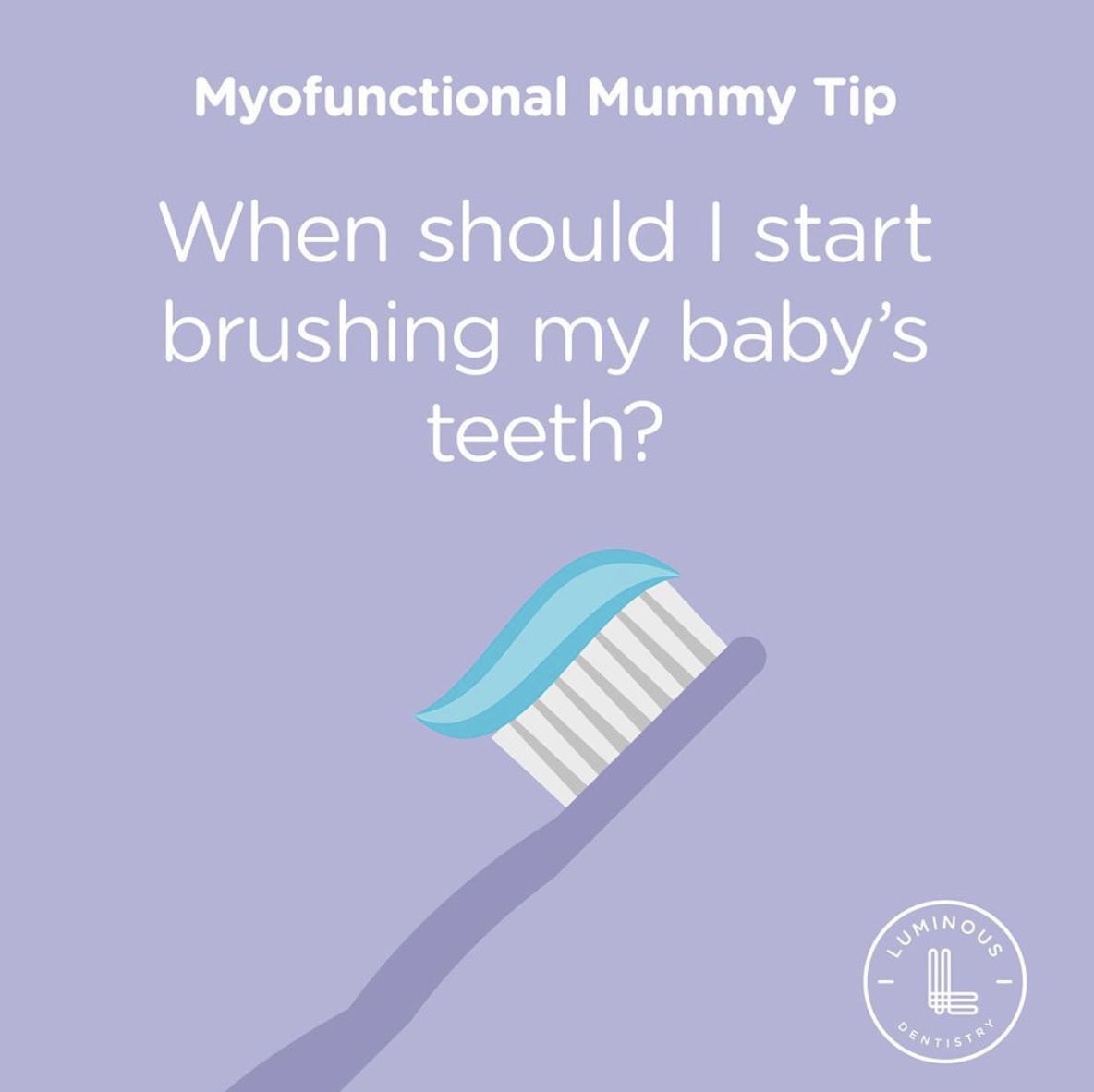

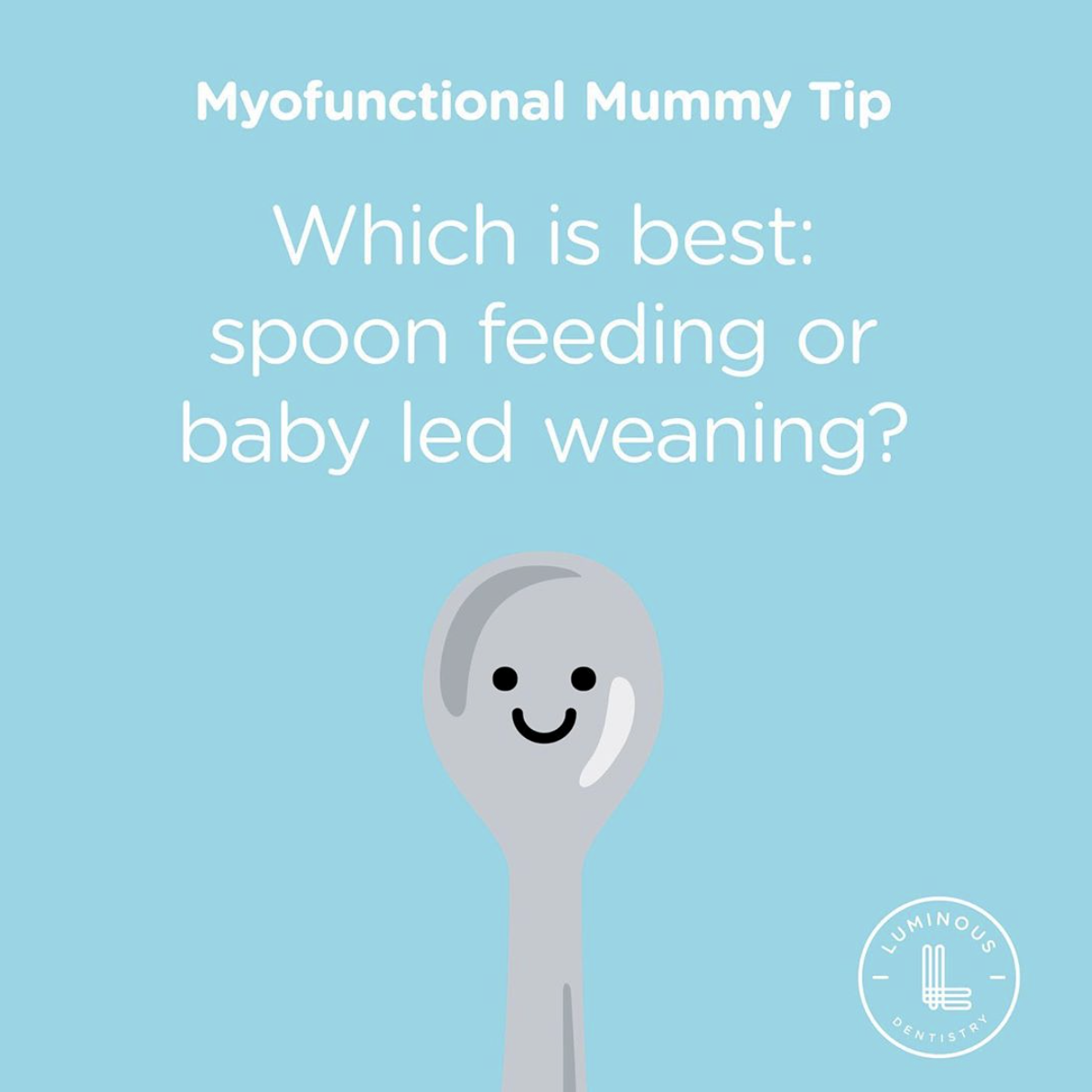
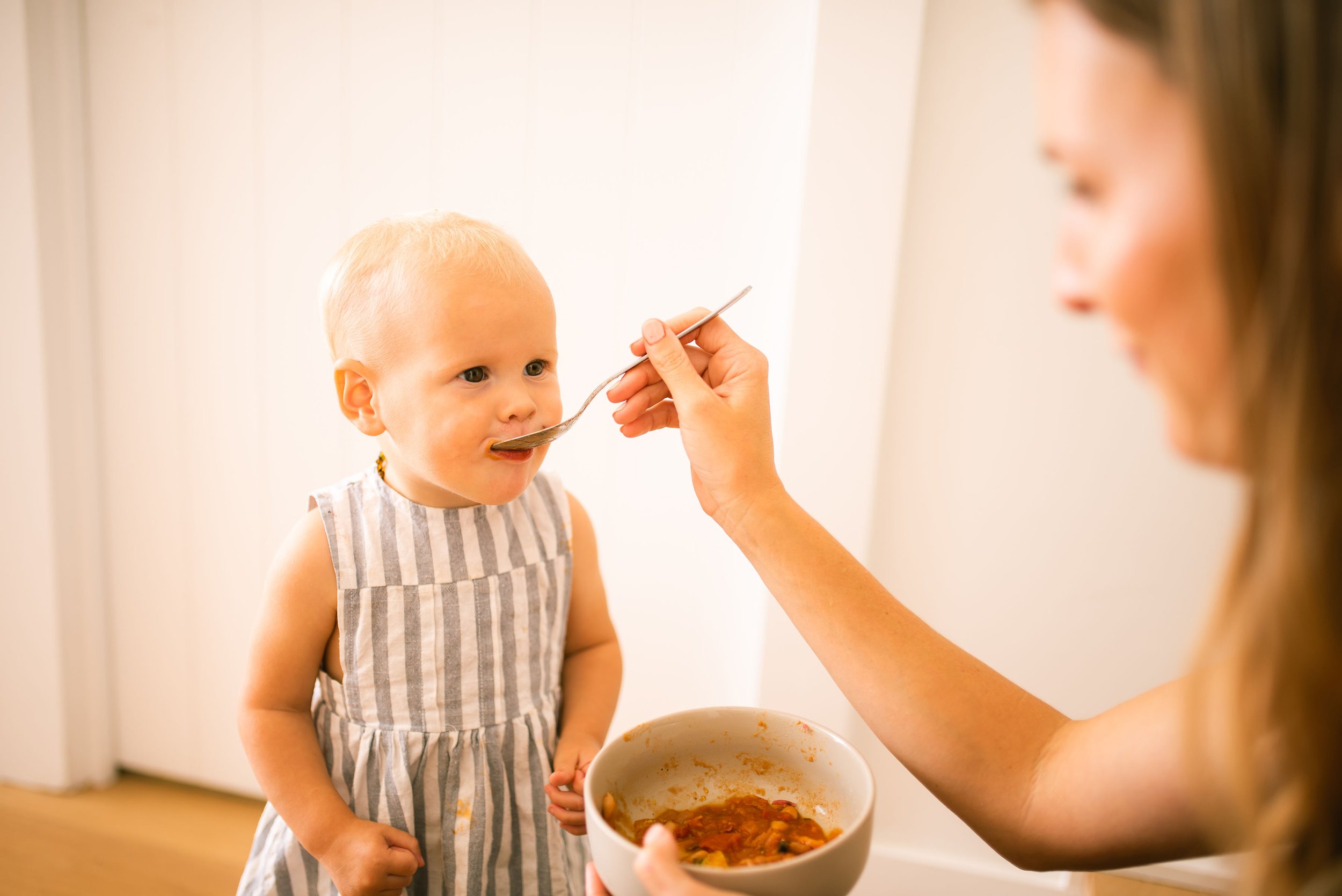
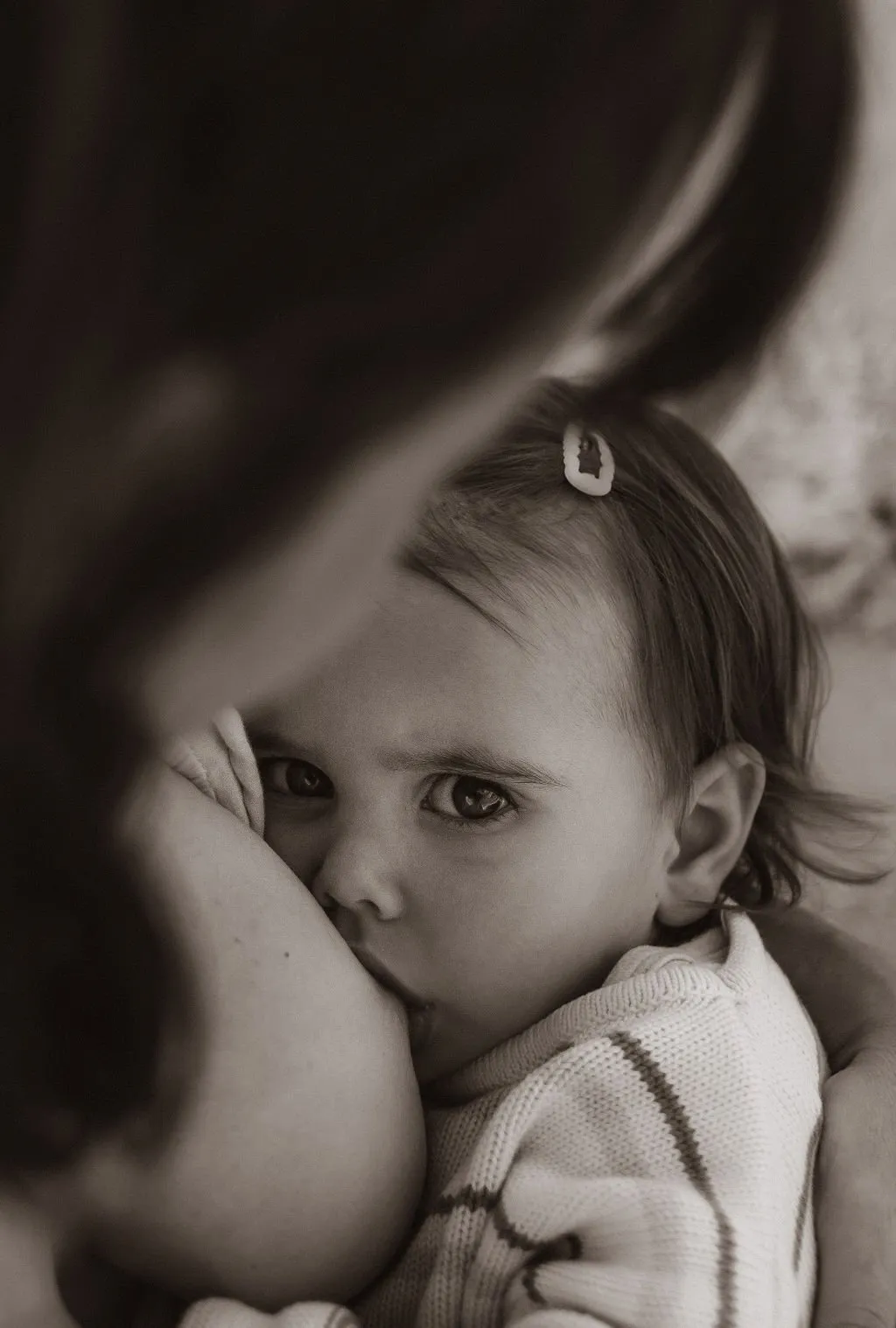
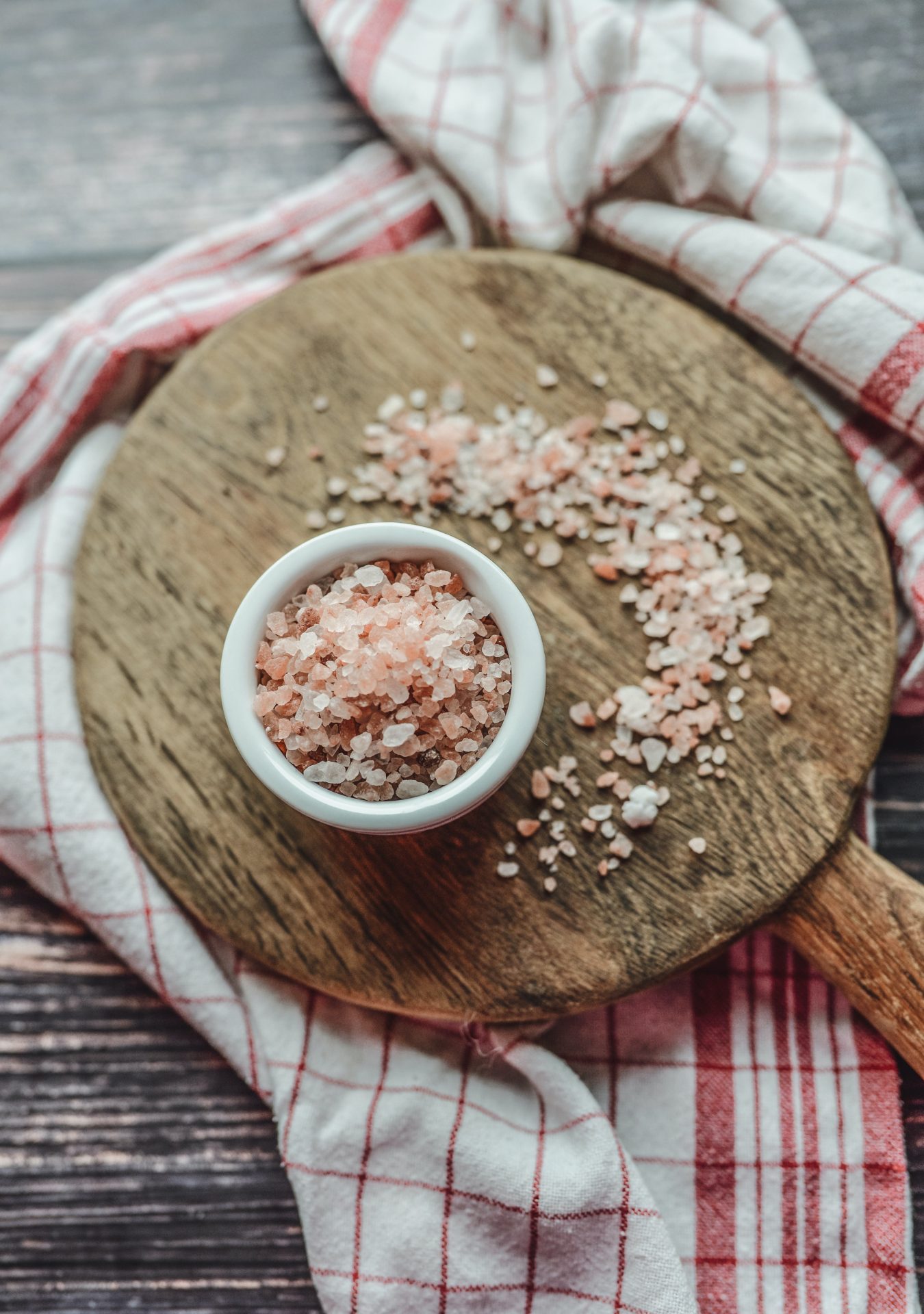
Thank you for sharing this very interesting article. I am writing from Germany and just have one question regarding Fluoride. All German babies are taking Fluoride pills (Natriumflourid) as soon as the got some teeth (Prescribed by the doctor) is that a different fluoride? Thank you very much
Michèle
very timely for me. thanks! do you have a homemade toothpaste for babies/toddlers? what about adding minerals to it like calcium and magnesium? what do you recommend? what toothbrush do you recommend?